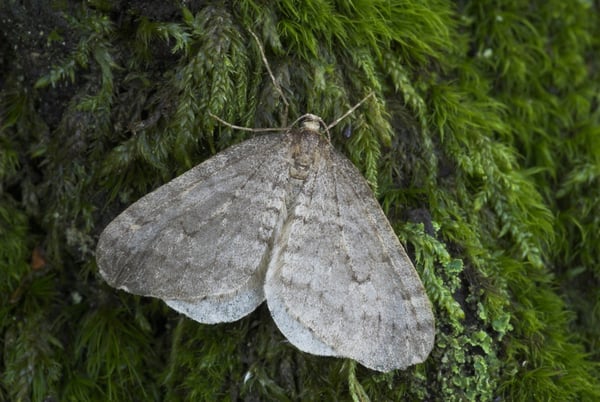Moths may be a bit misunderstood.
Between moths and butterflies, butterflies seem to get all the credit over their cousins—after all, they’ve got aesthetic appeal on their side. Moths, on the other hand, get kind of a bad rap. Not to say they haven’t earned it: who hasn’t sat outside on a summer evening only to be bombarded by flapping wings crowding the outdoor lighting? We’ve all tried desperately to rush into our homes and slam the door, praying we beat the moths inside. Many of us have had moths invade our pantries and closets, making quick meals of our food and fabrics. For all their flaws, though, moths are pretty interesting critters. Here are some moth facts you may not know:

- Moths outnumber butterflies. There are over 9 times as many species of moth as there are butterflies. There are about 160,000 different species of moth worldwide, and 11,000 of them can be found in the United States.
- Even without noses, male moths still have a crazy sense of smell. Moths “smell” by detecting chemical cues in their environment, and males are incredible at it. Some moth species can smell a potential mate from seven miles away. The current moth smell-o-vision record is held by a male promethea moth, who flew 23 miles chasing female pheromones (sadly for him, it wasn’t a female—it was a pheromone trap set by a scientist).
- Some moths don’t eat. Some moths thrive on nectar, others don’t eat (or can’t eat) at all. For instance, the adult Luna moth doesn’t even have a mouth. Once it reaches the adult stage, its sole purpose is to mate and lay eggs—giving the moth about a week to live.
- Moths are frequently eaten. Moths and their caterpillars provide a protein-rich food source for many kinds of animals. Birds, lizards, bats, small mammals, frogs, and many others rely on moths and caterpillars for sustenance. In some countries, you can even find people consuming moths or caterpillars as a snack.
- Moths are masters of disguise. Caterpillars may look like twigs, adults may blend into tree bark. Some moths are famous for mimicry, often impersonating other animals to avoid danger. Many have evolved to look like wasps or tarantulas, to convince predators they’re just too much trouble to bother with. Others use “startle markings”, such as bright colors or patterns that look like large eyes. Tiger moths even use ultrasonic clicking sounds to ward off bats hunting with sonar.
There you have it: Moths might be the slightest bit misunderstood. Sure, they’re relatively unwelcome guests. They generally don’t harm humans, but can be destructive to food, fabric, and foliage, so even if you were fascinated by these facts, you probably don’t want moths in or around your home. Call Burgess Pest if you’re having a problem with moths in your Massachusetts or Rhode Island residence. We’ve got almost a century of tricks up our sleeves to lure moths from your lights (or pantry, or clothes, or trees).


